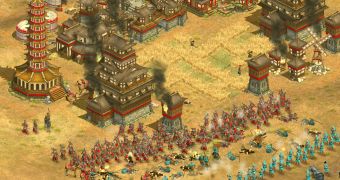A new experiment that has been published in the medical journal Brain and Cognition shows that having specific regions of the brain bigger than normal might be an advantage when learning and playing real time strategy games.
The experiment was conducted by Doctor Chandramallika Basak from Rice University and he worked with 20 adults aged between 65 and 75 years of age that have had no exposure to video games previously to the study and involved the real time strategy game Rise of Nations, that has been launched in 2004.
Before the participants played the game, the team took high-resolution MRI images of their entire brains.
They were then asked to play almost 24 hours of Rise of Nations, split into 90 minute sessions, during the course of one whole month.
All the games were set on the easiest difficulty and the participants were scored on how quickly they managed to win the game.
Dr. Basak has said that Rise of Nations was chosen because it challenges players “to continually assess his or her available resources, plan and expend those resources, monitor expanding territories and multiple cities, and introduce methods to generate revenues and improve technology.”
The study team then correlated the results from the real time strategy play session with the MRI images and saw that a bigger than normal size of certain brain regions was linked to better than average in-game performance.
The regions are associated with dual tasking, planning, self regulation, detecting errors and motor control.
In the paper the conclusion from Doctor Basak is: “We found that grey matter volumes of five regions were correlated with complex skill acquisition, as measured by improvements in time spent to successfully play the video game.”
Dr. Basak has worked with real time strategy games before, with a 2008 study he published in Psychology and Aging showing that those who played Rise of Nations managed to show improvement in reasoning, short-term memory and cognitive abilities.

 14 DAY TRIAL //
14 DAY TRIAL //